Dr Beau Webber - Personal home page
|
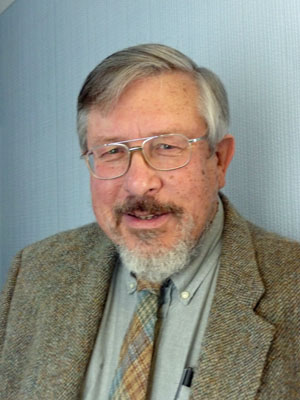 |
I research into matter that is structured on the nano-scale to
micro-scale using NMR relaxation, NMR
cryoporometry and neutron scattering and x-ray scattering. In
particular, I study the properties of liquids in nano-metric pores -
the small sizes greatly changes the properties of ordinary materials
- i.e. water/ice may freeze and melt at -20C.
These properties can be used to probe the properties of ordinary
materials like house roof tiles. (How frost durable are they ?
What pore sizes do they have ?) These techniques can also be used
to investigate subjects as diverse as the behaviour of oil and
water in rocks, as well as the properties of the rocks themselves,
the behaviour of high-performance (nano-material) batteries and
the adsorption and release properties drug molecules in small
pores. Important recent applications include both oil in sales and
carbonate rocks, and studying the properties of biochars,
for carbon sequestration and soil improvement.
- My neutron scattering and NMR research into water/ice systems
confined in pores has successfully shown that the water/ice
system near a surface or interface is disordered, and may be
plastic (in a predominantly rotational state), down to below
-50C. This research is relevant to the flow properties of
glaciers and snow-packs, with a vast number of ice/air
interfaces, and provides a nano-metric reason for the ability of
ice, otherwise a brittle material, to be able to flow in
glaciers. Studies of nano-structured liquids in confined
geometry and at surfaces. J. Beau W. Webber. Progress in
NMR Spectroscopy, 56, 1, 78-93, 2010. DOI: 10.1016/j.pnmrs.2009.09.001
(Invited.)
- My NMR research into methane hydrate systems confined in
pores has shown that the phase diagram has a hysteresis, such
that if global sea-temperature rises can be stabilised, and
reversed, this will not be sufficient to replace the methane
that is being lost from the bed of seas and lakes - instead a
temperature drop more typical of an ice age is needed. Clathrate
formation and dissociation in vapour/water/ice/hydrate
systems in SBA-15, Sol-Gel and CPG porous media, as probed
by NMR relaxation, novel protocol NMR Cryoporometry, Neutron
Scattering and ab-initio QM-MD simulation. J. Beau W.
Webber, Ross Anderson, John H. Strange, Bahman Tohidi.
Magnetic Resonance Imaging. Vol 25/4, pp 533-536, 2007. DOI: 10.1016/j.mri.2006.11.022
I now have about 40 published papers, including two techniques
papers published in Physics Reports, one on neutron scattering, one
on NMR :
- Nano-metrology of porous structures - I. Using neutron
scattering to access pore lattice, diameter and wall
parameters, by comparison with direct calculation of
scattering from models of extended arrays of regular or
randomised pores. J.Beau W. Webber. Physics Reports, 526,
4, 227-248, 2013. DOI: 10.1016/j.physrep.2013.01.002 .
The other Physics Reports paper was written jointly with Kent and
Cambridge Universities :
- Nuclear Magnetic Resonance Cryoporometry J.
Mitchell, J. Beau W. Webber and J.H. Strange. Physics Reports,
461, 1-36, 2008. DOI: 10.1016/j.physrep.2008.02.001
.
The strength of the technical side has just resulted in my company
Lab-Tools Ltd. aquiring a
£1million EU FP7 grant, as part of a 7 strong international
consortium. This project "Autonomous Reed Bed Installations (ARBI)"
will enable the consortium to develop ecologically sound and
sustainable modular reed-bed installations for purifying
waste-water. Multiple nuclear magnetic resonance (NMR)
installations, buried in the reed-beds,
will be used to monitor their life-cycle, so that corrective action
can be taken to prevent clogging and extend their life.
I also have just started a science blog in the Kentish on-line
newspaper KentOnline :
The
Science Blog, with Dr Beau Webber
Music:
I build and maintain a web page to promote live music in
the county of Kent, UK :
- Folk , Celtic , Bluegrass , Blues , Jazz and Cajun music in Kent, UK.
- Kent gig calendars , news
, gig reports , photos , video & MP3 music .
- Kentish folk-clubs , sessions , open-stages and sing-arounds .
- Kent venue and musician listings. KentFolk iGoogle Gadget .
where there are gig calenders and monthly news pages, so
there is no need to miss an event.
So if you are putting on a gig or event in Kent, please do
send me information about it and I will try and get the
event listed on the web page calendar and news.
From time to time I put on music events, where
possible in the Littlebourne Thatched Barn, and
usually fiddle-led, see : FiddlersVarious.

|

www.KentFolk.com music pages

|
Photography
Panoramas
I have fun with stitching together panoramic images from photos I
have taken. There are a number of tools for this, but some of the
more powerful are PanoTools and PTgui www.ptgui.com

Bluebells, Crundale woods, Kent, UK

Soriano nel Cimino, Italy.
Images © Dr. Beau Webber
For some these and some others of my stretched and panorama
pictures, pinned to their location on Google Earth maps, see : www.panoramio.com/user/1020456
Stereo Panoramas
I also have fun creating stereo images and panoramas
- I have written a viewer in which one can zoom into stereo
panoramas, and then pan around, and change brightness and contrast
to improve visibility.
Go to www.lab-tools.com/instrumentation/StereoPanorama/
to download a free viewer.
I created this at the time of the landing of the Mars rover
"Spirit", to look at the 360 degree panoramas of the Mars landscape
that it was sending back. There are lots of links on that page to a
range of stereo panoramas. Here is an example from using
StereoPanorama to give a stereo-view, into a photo-pair from an
earlier Mars landing :
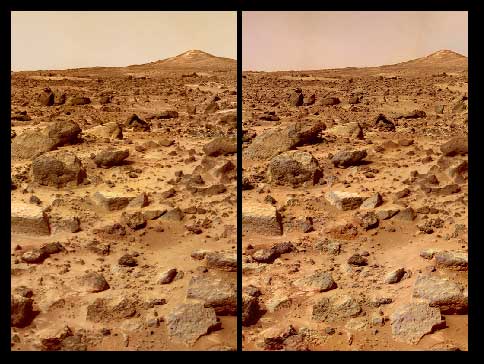
A view into part of a panoramic stereo image pair in colour from
an early Pathfinder mission.
Images © Nasa; stereo-images © Dr. Beau Webber
Astronomy & Photography
I do not have a good camera mount on my Newtonian yet (no-longer
have access to a metal workshop), but here is a photo obtained by
just hand-holding a light-weight 5M pixel digital camera at the
eyepiece :
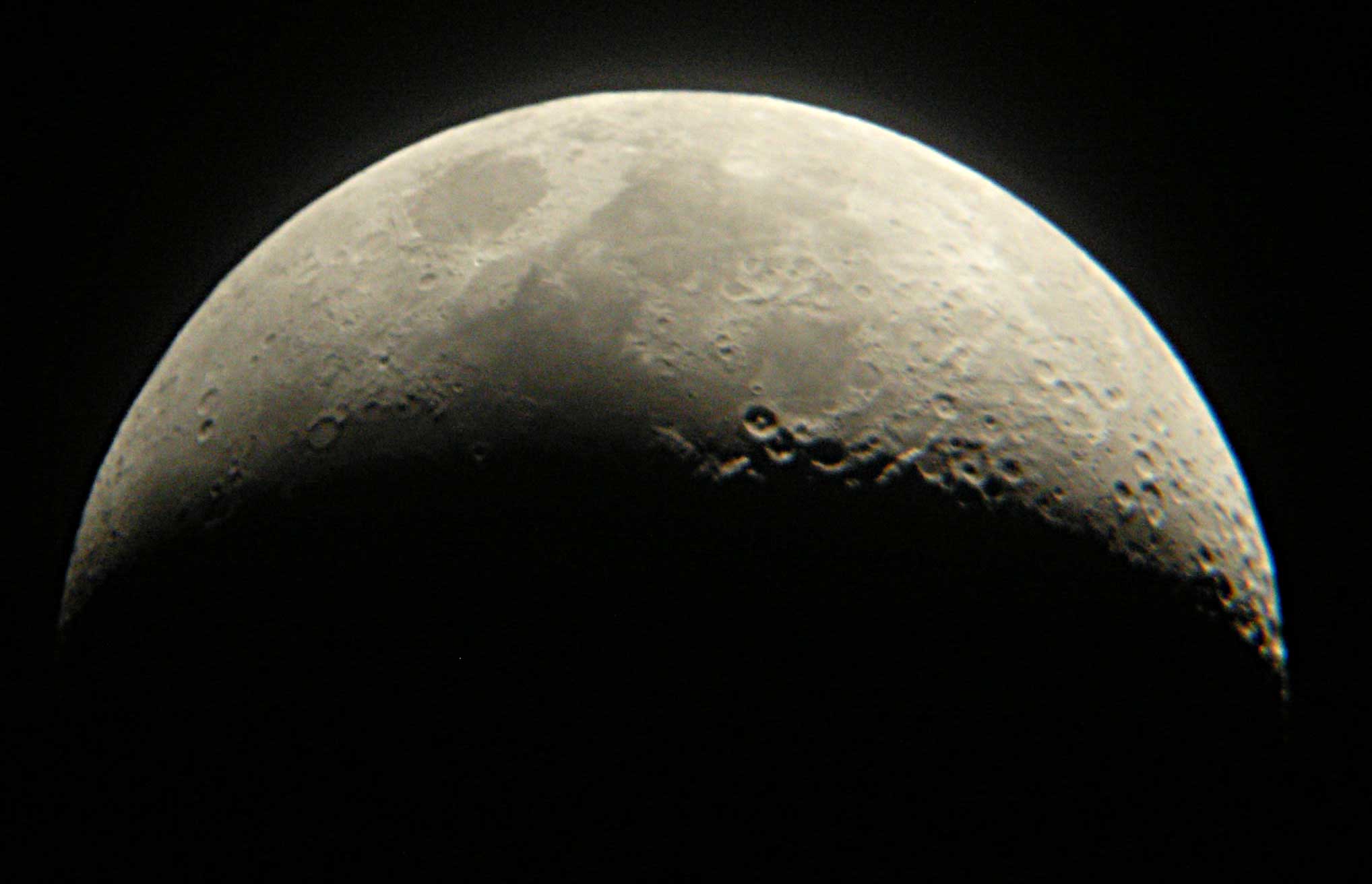
A crescent moon - 2004-03-26.
Image © Dr. Beau Webber
Recently I have used StereoPanorama to look at full-colour
stereo-pairs of comet P17/Holmes, that I have created from others'
superb photos. The stereo-effect just comes from the comet motion,
but it seems to help the brain separate the delicate comet corona
and tail from the background stars.
Here is an example pair created from :
Left stereocomponent: spaceweather.com/comets/holmes/05nov07/Jack-Newton1.jpg
www.arizonaskyvillage.com/
Right stereocomponent: http://spaceweather.com/comets/holmes/05nov07/Ivan-Eder1.jpg
eder.csillagaszat.hu/en.htm
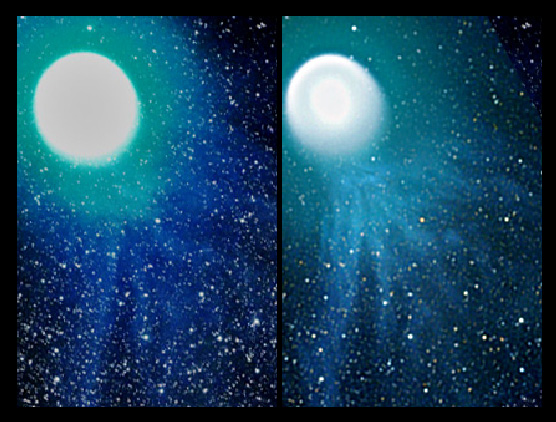
A zoomed stereo-pair view into 17P/Holmes halo and tail structure.
2007-11-4+5.
Images © Jack Newton (L), Ivan Eder (R); stereo-images © Dr.
Beau Webber
For more full-colour stereo-pair views of 17P/Holmes, including
some of the ion-tail disconnection, see :
www.beauwebber.me.uk/stereo/comet_17P-Holmes/
Swimming, Surfing and Scuba Diving
To learn more about scuba diving with a brilliant club, see : www.bsac.org
Here are some links to a wonderful set of
warm-water dives I made from the Eastern islands of Malaysia :
www.beauwebber.me.uk/dive-reports/2006/2006-07-25_Malaysia-east-coast-islands
www.beauwebber.me.uk/dive-reports/2006/2006-07-31_Malaysia-dive1_Lang-Tengah_DCoconut
www.beauwebber.me.uk/dive-reports/2006/2006-08-03_Malaysia-dive2_Perhentian-Isles_Tanjung-Basi
www.beauwebber.me.uk/dive-reports/2006/2006-08-03_Malaysia-dive3_Perhentian-Isles_DLagoon
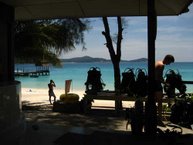

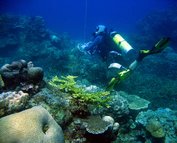
Diving in the Perhentian Isles, Malaysia. 2006-08-03.
Images © Dr. Beau Webber
Nano-Science
I study structured matter, mainly on
the nano- to meso- to micro-scale: from about 1 Å up to a few µm,
primarily using techniques based on NMR and neutron scattering.
I do this both from a wish to study
the novel properties of the matter, and also from a wish to apply
this knowledge to the science of metrology over this nano-scale to
micro-scale range.
In particular, I study the behaviour
of liquids in confined geometry, both at and near the surfaces of
substrates. In both cases the physical properties of liquids are
modified, sometimes substantially.
First I study the properties of
liquids in well characterised porous materials, such as sol-gel
silicas, and the templated MCM and SBA-15 silicas.
Then I apply this understanding to
investigate the properties of uncharacterised porous materials,
such as porous carbons, biochar, fired or un-fired clays, marine
sediments, oil-bearing rocks, meteorite fragments ....
In my research, I specialise
in combining results from different measuring techniques, using
computer based models, and also in designing novel measurement
protocols.
The prime experimental techniques I
use are :
- NMR
relaxation,
- NMR
cryoporometry,
- NMR
diffusion in a magnetic gradient,
- Neutron
Diffraction (NS),
- Small
Angle Neutron Scattering (SANS),
- X-Ray
scattering (XRD),
- N2
Gas Adsorption,
- Differential
Scanning Calorimetry and
- Thermoporosimetry.
My research home page is at Research home and my publications are
listed at Beau Webber's publications .
Nano-metrology
- Pore size Analysis
 I am currently
director of the micro/SME company Lab-Tools Ltd. www.Lab-Tools.com
I am currently
director of the micro/SME company Lab-Tools Ltd. www.Lab-Tools.com
- specialising in contract nano-to micro-scale analyses of
structured liquids and solids (pore-size analysis).
The main technique used is NMR Cryoporometry, which is closely
related to the technique of gas adsorption, but is measured using
a liquid rather than a gas. The technique originated at Kent
University and has been extensively developed by Lab-Tools : Nuclear
Magnetic Resonance Cryoporometry J. Mitchell, J. Beau W.
Webber and J.H. Strange. Physics Reports, 461, 1-36, 2008. DOI:
10.1016/j.physrep.2008.02.001
 The studies we perform
are relevant to :
The studies we perform
are relevant to :
- Water/ oil / gas / gas hydrate extraction.
- Construction industry : cement / concrete / clay /
wood - pore size distributions and water content.
- Food, paint, biological interfaces and medical
materials.
- Biochar studies for carbon sequestration and soil
improvement.
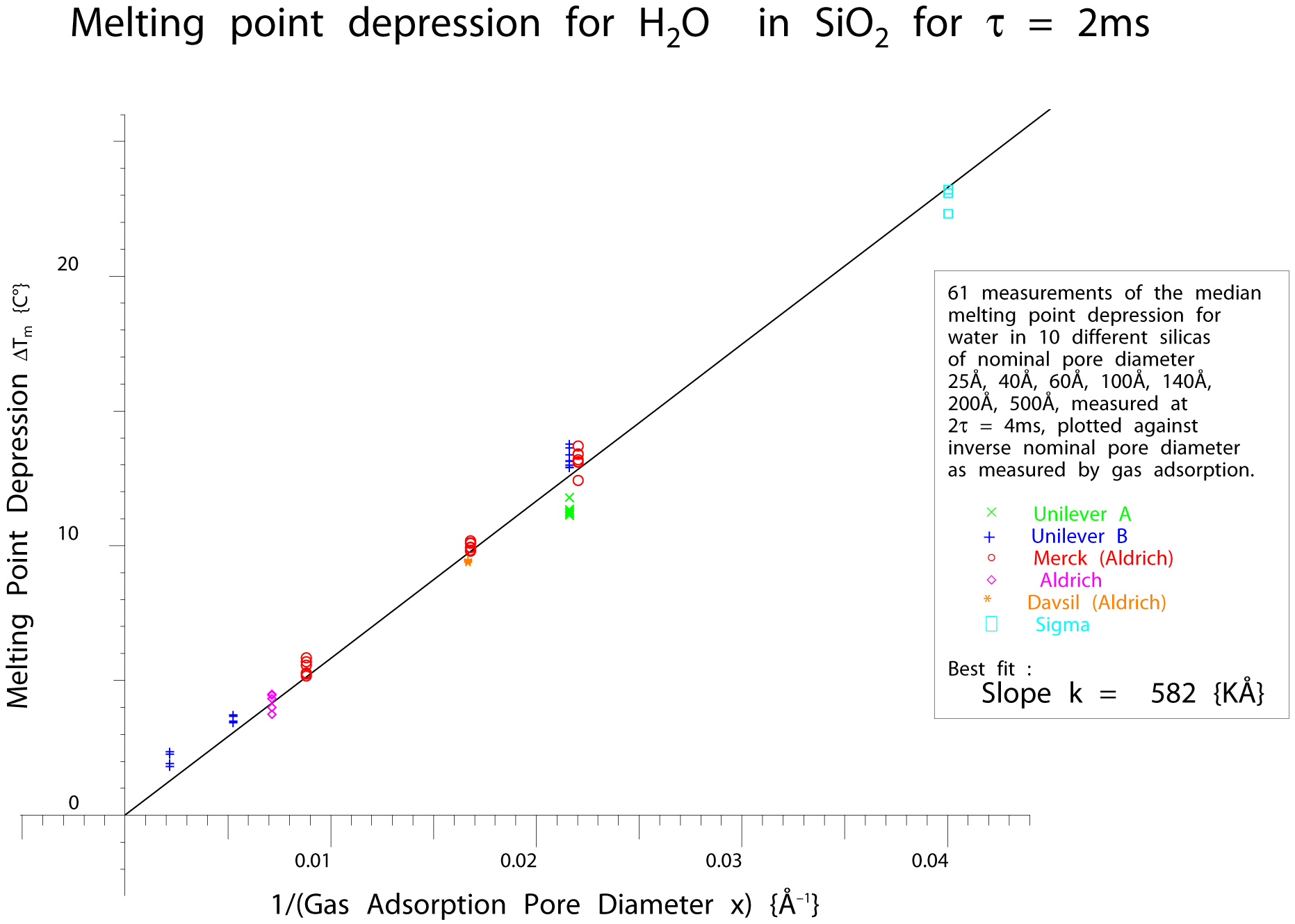

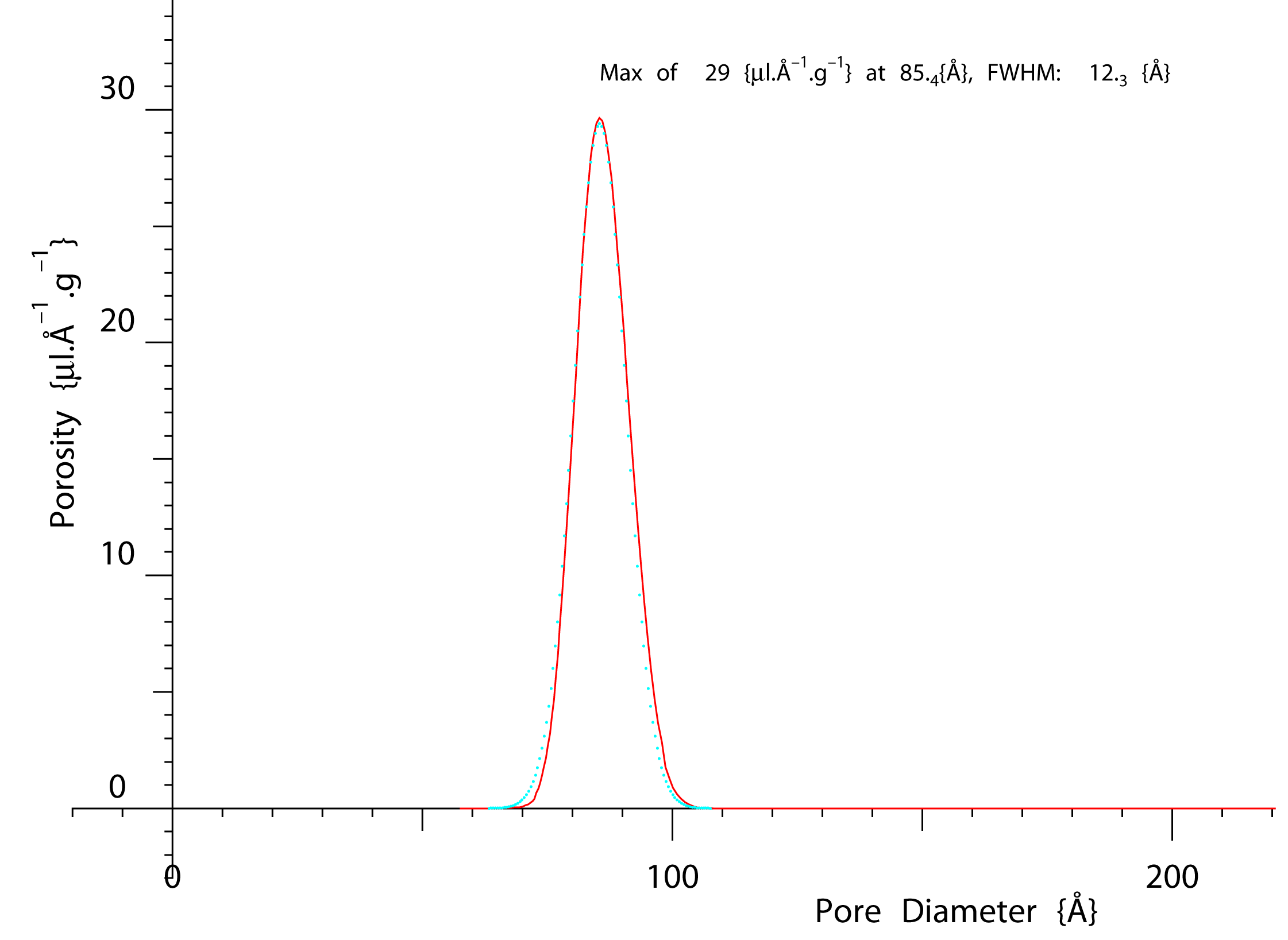

Software
and
Instrumentation Design
For this scientific research work I
have to design instrumentation that otherwise would not exist,
thus the Lab-Tools
company also has an instrumentation
division .
 I have been
designing NMR and computerised instrumentation and their software
since 1970. I designed and built NMR spectrometers in the 1970 and
1980s (sold in the UK and internationally, and some components
still performing cutting edge research). I have worked with and
built hardware and software interfaces for DEC PDP 8 and 11s,
worked on an Apl to C compiler ( The APLc compiler project ) since
the days of the VAX 11/750, designed and built a set of
rack-mounted, modular Motorola 6802 based transient data
capture/averager/processor microcomputers (using dual-ported
memories) in the early 1980s, for NMR data capture and analysis. (Capturing
transient data using a microprocessor based system. John
Beausire Webber, Master of Science Dissertation, 80 p, 88 p of
computer printout. Physics, University of Kent, UK, 1979.)
In the 1990s I designed and built a dedicated scanning NMR
Cryoporometer, using one of my NMR spectrometers, IEEE 448
instrumentation and LabVIEW software on a PC (only recently
switched off). (Characterising Porous Media. John
Beausire Wyatt Webber, Ph.D. Thesis, xvii, 305 p, Physics,
University of Kent, UK, 2000. On
the
Web, PDF)
I have been designing with FPGAs since 1990, and am currently
rebuilding the instrumentation in my NMR lab using credit-card
sized USB interfaced FPGA based modules of my own design. I am
finding the credit-card Linux computer the Raspberry
Pi quite useful for web serving applications, and am looking
towards applying Dyalog's new free Apl
interpreter
for the Raspberry Pi. I am also working towards the next
generation instrumentation, and developing the next
generation of digital NMR radio-frequency approaches based on the
newly available of multiple processors on a chip, such as the XMOS devices and
Adapteva's
Parallella
with multi-core
Epiphany chip, again both credit card sized boards.
I have been
designing NMR and computerised instrumentation and their software
since 1970. I designed and built NMR spectrometers in the 1970 and
1980s (sold in the UK and internationally, and some components
still performing cutting edge research). I have worked with and
built hardware and software interfaces for DEC PDP 8 and 11s,
worked on an Apl to C compiler ( The APLc compiler project ) since
the days of the VAX 11/750, designed and built a set of
rack-mounted, modular Motorola 6802 based transient data
capture/averager/processor microcomputers (using dual-ported
memories) in the early 1980s, for NMR data capture and analysis. (Capturing
transient data using a microprocessor based system. John
Beausire Webber, Master of Science Dissertation, 80 p, 88 p of
computer printout. Physics, University of Kent, UK, 1979.)
In the 1990s I designed and built a dedicated scanning NMR
Cryoporometer, using one of my NMR spectrometers, IEEE 448
instrumentation and LabVIEW software on a PC (only recently
switched off). (Characterising Porous Media. John
Beausire Wyatt Webber, Ph.D. Thesis, xvii, 305 p, Physics,
University of Kent, UK, 2000. On
the
Web, PDF)
I have been designing with FPGAs since 1990, and am currently
rebuilding the instrumentation in my NMR lab using credit-card
sized USB interfaced FPGA based modules of my own design. I am
finding the credit-card Linux computer the Raspberry
Pi quite useful for web serving applications, and am looking
towards applying Dyalog's new free Apl
interpreter
for the Raspberry Pi. I am also working towards the next
generation instrumentation, and developing the next
generation of digital NMR radio-frequency approaches based on the
newly available of multiple processors on a chip, such as the XMOS devices and
Adapteva's
Parallella
with multi-core
Epiphany chip, again both credit card sized boards.


In my research I make heavy use of the array processing
language Apl : I first met APL in the pages of Byte Magazine (August
1977,
Working with APL), and realised that it was just what a
research physicist needed for the interactive manipulation of arrays
of experimental data. I made various improvements to Apl\11 on the
VAX 750 and 1982 I added the multi-tasking facilities "Julian time
stamp": 'jts' and 'pipe' to Apl\11, to give easy access to the Unix
shell. (Pipe is now incorporated into IBM's APL2). I later added
these and the more generic 'spawn' to the APL to C translator aplc,
implementing in 1999 interactive screen-based neutron-scattering
data analysis tools, interfacing the Apl to postscript and tcl/tk
windows : DoD22 : Show and Analyse Area Multidetector Data
for ILL D22
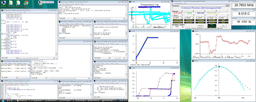 I now use APL
(particularly APLX) for interactive multi-tasking control of my
NMR apparatus and designing the GUI interfaces - it is
interactive which means both rapid development, and that it is
ideal for day-to-day use in the lab, for controlling the
instrumentation and analysing the data, with APL interacting
directly with the FPGA based instruments.
I now use APL
(particularly APLX) for interactive multi-tasking control of my
NMR apparatus and designing the GUI interfaces - it is
interactive which means both rapid development, and that it is
ideal for day-to-day use in the lab, for controlling the
instrumentation and analysing the data, with APL interacting
directly with the FPGA based instruments.
I have recently re- designed an
increasing amount of my laboratory instrumentation, and it is now
mostly based on field-programmable gate-arrays (FPGAs), with APL
interacting directly with the FPGA based instruments over the USB
bus - see APLX
Version
4, from the viewpoint of an experimental physicist , http://www.lab-tools.com/instrumentation and
for
videos
and inside information on some of the techniques I use in my fpga
designs see FPGA Modular Firmware Skeleton for multiple
instruments - Morph-IC-II, YouTube videos.
designed an
increasing amount of my laboratory instrumentation, and it is now
mostly based on field-programmable gate-arrays (FPGAs), with APL
interacting directly with the FPGA based instruments over the USB
bus - see APLX
Version
4, from the viewpoint of an experimental physicist , http://www.lab-tools.com/instrumentation and
for
videos
and inside information on some of the techniques I use in my fpga
designs see FPGA Modular Firmware Skeleton for multiple
instruments - Morph-IC-II, YouTube videos.
Currently I am having good success in porting the APL to C
translator aplc to soft processors such as the Altera Nios II, and a
range of the new credit-card sized machines, including the Linux
computer the
Raspberry Pi, the multi-core XMOS devices and Adapteva's Parallella
with multi-core
Epiphany chip. I currently manage the APL
Parallel Programming section of the Adapteva Parallella Forum,
where there is a discussion on the ongoing progress regarding the
latter case. See their Kickstarter
update.
Links to Dr. Beau Webber's web pages
Contributor to / author of :
Recommended links
E-mail me : J.B.W.Webber@kent.ac.uk or see my thesis, or some of my posters or go to my folk music page KentFolk.com
- cheers, beau webber
First created: 2006-04-26, updated 2013-03-09 :

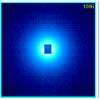












 I am currently
director of the micro/SME company Lab-Tools Ltd.
I am currently
director of the micro/SME company Lab-Tools Ltd.  The studies we perform
are relevant to :
The studies we perform
are relevant to :


 I have been
designing NMR and computerised instrumentation and their software
since 1970. I designed and built NMR spectrometers in the 1970 and
1980s (sold in the UK and internationally, and some components
still performing cutting edge research). I have worked with and
built hardware and software interfaces for DEC PDP 8 and 11s,
worked on an Apl to C compiler (
I have been
designing NMR and computerised instrumentation and their software
since 1970. I designed and built NMR spectrometers in the 1970 and
1980s (sold in the UK and internationally, and some components
still performing cutting edge research). I have worked with and
built hardware and software interfaces for DEC PDP 8 and 11s,
worked on an Apl to C compiler ( 

 I now use APL
(particularly APLX) for interactive multi-tasking control of my
NMR apparatus and designing the GUI interfaces - it is
interactive which means both rapid development, and that it is
ideal for day-to-day use in the lab, for controlling the
instrumentation and analysing the data, with APL interacting
directly with the FPGA based instruments.
I now use APL
(particularly APLX) for interactive multi-tasking control of my
NMR apparatus and designing the GUI interfaces - it is
interactive which means both rapid development, and that it is
ideal for day-to-day use in the lab, for controlling the
instrumentation and analysing the data, with APL interacting
directly with the FPGA based instruments. designed an
increasing amount of my laboratory instrumentation, and it is now
mostly based on field-programmable gate-arrays (FPGAs), with APL
interacting directly with the FPGA based instruments over the USB
bus - see
designed an
increasing amount of my laboratory instrumentation, and it is now
mostly based on field-programmable gate-arrays (FPGAs), with APL
interacting directly with the FPGA based instruments over the USB
bus - see